Leg training to do at home is simple and easy, allowing you to work the glutes, calves, thighs and back of the leg, and can be done with or without the use of weights.
These exercises help to improve endurance and muscle strength, in addition to toning the skin, combating sagging and, in the case of women, improving the appearance of cellulite. However, one must always take into account the physical conditions and limitations of the body to avoid injuries such as bruises, strains or muscle strains.
Therefore, it is important to have a medical evaluation before starting any physical activity and a physical educator who can guide training that meets individual needs and objectives.
How to do leg workout at home
Leg training at home can be done 1 to 2 times a week, with exercises that work on strength, resistance and balance, for example.
Before starting training, it is important to warm up to improve muscle performance, activate circulation and prevent injuries. A good warm-up option is to take a 5-minute walk, do 10 consecutive jumps as fast as you can or go up and down stairs for 5 minutes, for example.
Some exercise options for doing a leg workout at home are:
1. Plantar flexion
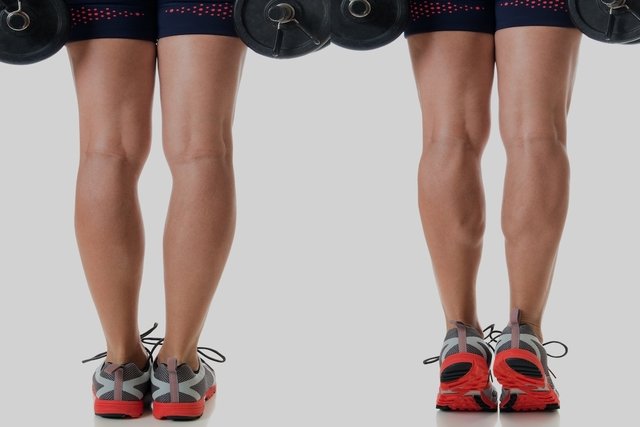
This exercise helps to strengthen the calf muscles, as well as improving the body’s balance and preventing injuries during running or walking training, for example.
How to make: lean against a wall or the back of a chair. With your spine straight and your abdomen contracted, stand on your toes and return to the starting position. This training can be done in 3 series of 12 to 20 movements and with 20 to 30 seconds of rest between each series.
Weighted option: you can wear shin guards, one on each leg, or hold weight in your hands like dumbbells or use plastic bottles with water or sand, to intensify muscle work.
2. Leg raises
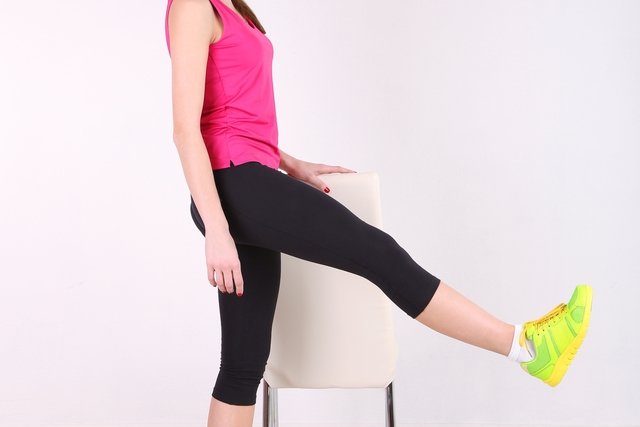
Leg raises are an exercise that improves the mobility, flexibility and muscle strength of the glutes and back of the thigh, in addition to the hip muscles, and can help with body balance.
How to make: Take a chair and place one hand on the backrest. With your spine straight and your abdomen contracted, raise one leg forward and then take the leg back, making movements as if the leg were a pendulum. Repeat the exercise with the other leg and return to the starting position. This training can be done in 2 to 3 sets of 10 to 15 repetitions.
Weighted option: Leg raises can be done using shin guards, one on each leg and with a weight recommended by a physical educator.
3. Squats
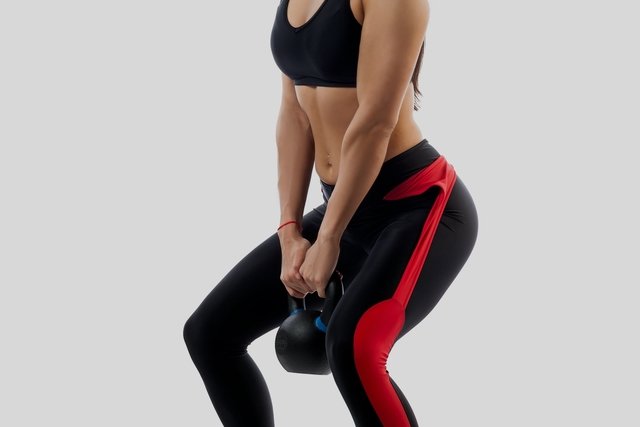
Squats are a complete exercise for the legs as they work the glutes, thighs, calves, back of the legs and abdomen.
How to make: Standing, feet apart, shoulder-width apart. The back should always remain straight and the abdomen contracted. Slowly descend by bending your knees, leaning your torso slightly forward and pushing your butt far back, as if you were going to sit on an invisible chair. Go down until your knees are at a 90-degree angle and do not extend beyond your toes. Return to starting position. Do 3 sets of 20 repetitions with 1 minute rest between sets. See other benefits of squats and how to do them correctly.
Weighted option: You can use a kettle ball or dumbbell as weight and, if you don’t have them, you can place one or more 1kg packages of rice or beans inside a backpack, for example. Thus, you must pick up the weight, and with both arms in front of the body, hold it and perform the squat movement descending with the arms aligned to the body.
4. Isometric squat
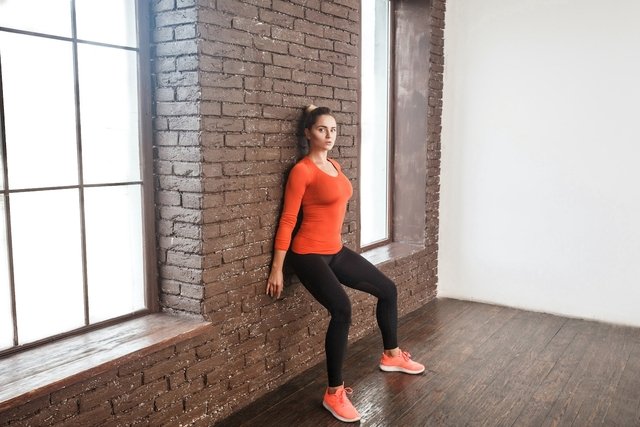
The isometric squat is another form of squat that works the gluteal, thigh, hamstring and lower back muscles. This squat has the advantage of helping prevent injuries, increases power, endurance and muscle definition, as well as strengthening muscles.
How to make: support your back against a wall, separate your legs at a distance corresponding to shoulder width. Bend your knees and lower yourself towards the floor, as if you were going to sit on a chair, forming a 90-degree angle. Stay in this position for 45 to 60 seconds and return to the starting position. Repeat this series 3 times, resting for 1 minute between each. Another option for doing isometric squats is to use a gym ball between your back and the wall.
Weighted option: You can use a dumbbell or a PET bottle filled with water as weight and do the isometric squat by placing your arms in front of your body, with both hands together holding the weight in line with your body and between your legs.
5. Bulgarian squat
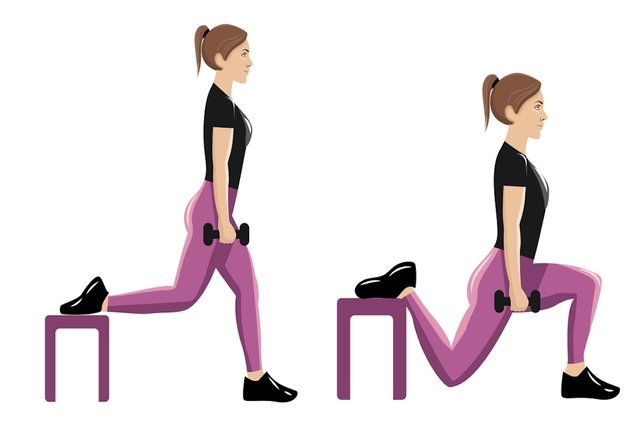
The Bulgarian squat is one of the most efficient workouts for working the thighs and glutes, improving muscle strengthening and stretching, as well as toning the legs.
How to make: On your back, place one leg on a chair or bench, keeping the other foot on the floor. Flex the knee of the leg that is resting on the floor, descending as if you were squatting. It is important to keep your spine straight and your feet and hips aligned. Do 3 sets of 10 repetitions with each leg, resting 1 minute between each set.
Weighted option: you can use a dumbbell in each hand to do squats or use a plastic bottle filled with water or sand or a 1kg package of rice or beans, for example.
Check out other ways to do squats to strengthen your legs and how to do them.
What to do after training
After leg training, it is important to stretch to help relax your muscles, reduce muscle stiffness and avoid cramps, in addition to toning your muscles, improving flexibility and preventing injuries.
Leg stretches should include the muscles of the front and back of the thigh and calf. To do these stretches, it is not necessary to use weights.
1. Stretching the back of the thigh
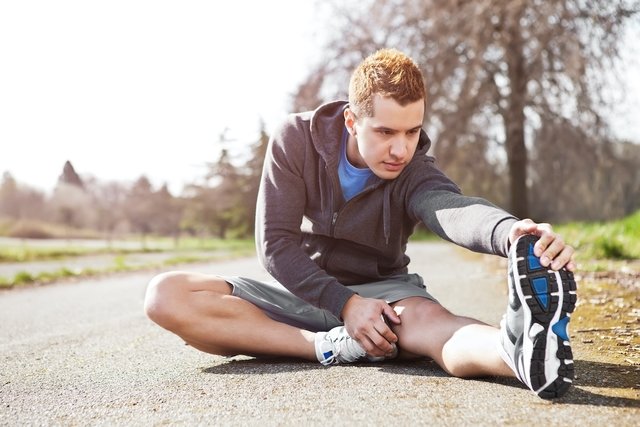
Stretching the back of the thigh can be done sitting on the floor, allowing you to stretch the hamstrings, glutes, calves and soles of the foot.
How to make: you must sit on the floor with your legs straight, bend one of your legs and with your spine straight and shoulders aligned, lean your body forward to reach your foot with one hand and try to pull it towards your body, holding for 20 to 30 seconds. Repeat with the other leg.
2. Front thigh stretch
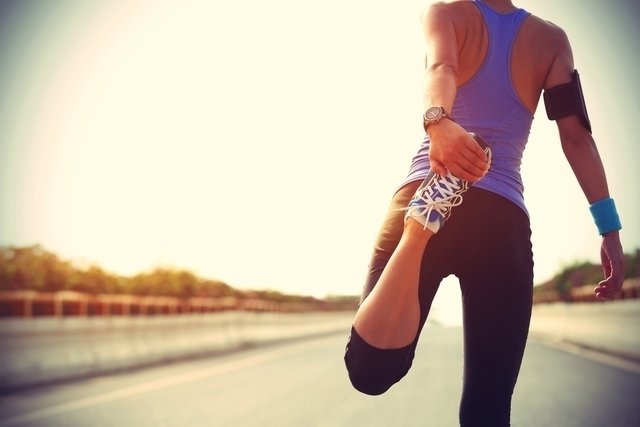
Stretching the front of the thigh should be done standing up and with your back straight. This exercise allows you to stretch the quadriceps muscle of the thigh, in addition to helping to improve the flexibility of the hips.
How to make: Stand on one leg and bend the other back, holding it with your hands for 30 to 60 seconds. Repeat with the other leg.
Check out more leg stretching options.

Sign up for our newsletter and stay up to date with exclusive news
that can transform your routine!
Warning: Undefined array key "title" in /home/storelat/public_html/wp-content/plugins/link-whisper-premium/templates/frontend/related-posts.php on line 12
Warning: Undefined array key "title_tag" in /home/storelat/public_html/wp-content/plugins/link-whisper-premium/templates/frontend/related-posts.php on line 13



